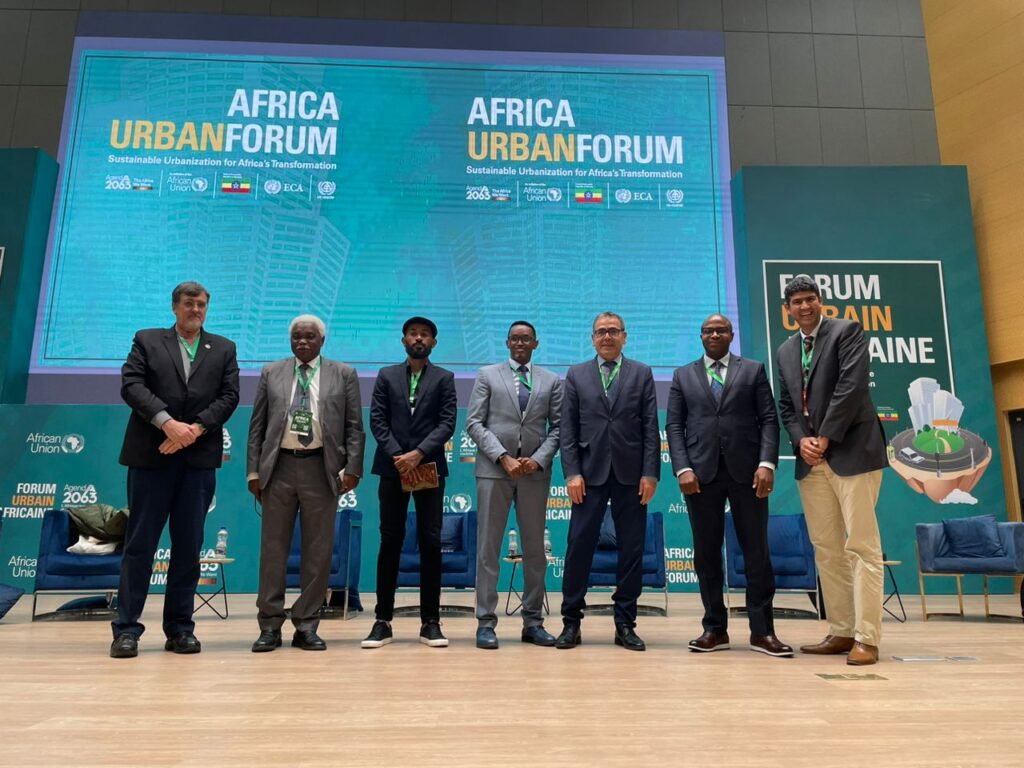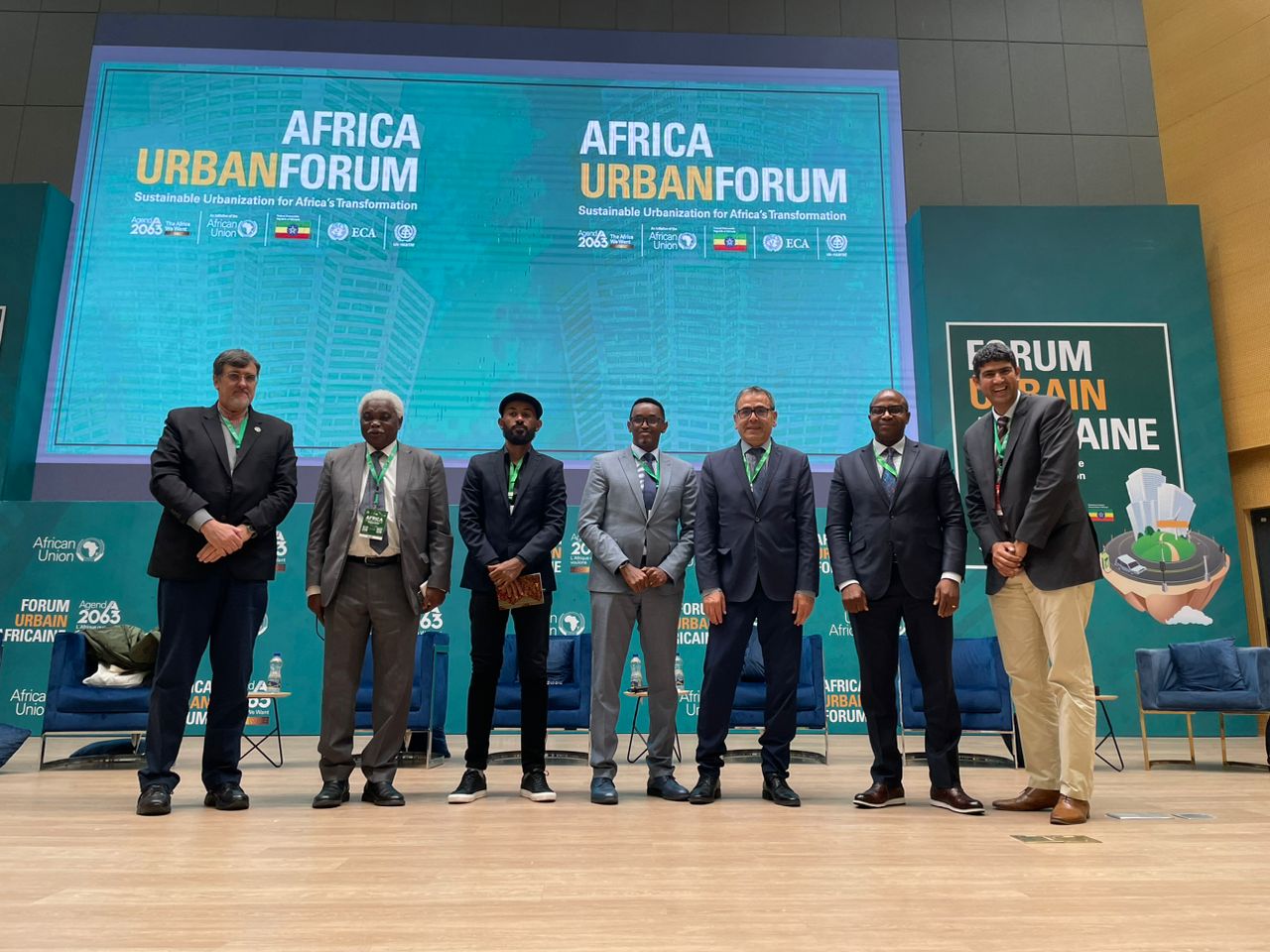
By Baboloki Semele
Addis Ababa, Ethiopia, 06 September 2024: As the African Urban Forum concludes today (06 September 2024), African leaders and key stakeholders in urban mobility convened yesterday (05 September 2024) to address the challenges and opportunities presented by the continent’s rapidly growing cities. Hosted by the African Union Commission (AUC) and the Africa Transport Policy Programme (SSATP), this session focused on improving urban mobility, with notable discussions on innovative solutions such as the Symbio City Program and the Africa Urban Development Forum. The panelists agreed in unison that with Africa experiencing unprecedented urbanization, the need for resilient and sustainable urban transport systems has never been more critical.
It emerged during the panel dialogue that since 1990, the number of African cities has grown from 3,300 to 7,600, with the urban population swelling by 500 million people. These cities, which are some of the fastest-growing in the world, are projected to add another 900 million inhabitants by 2050 and this urban expansion demands urgent investment in infrastructure, services, and sustainable transport to ensure the future prosperity of the continent.
The session underscored the importance of integrating urban mobility into national development strategies and transport policies. Attendees explored solutions such as the creation of the African Association of Urban Mobility Authorities, the development of Bus Rapid Transit (BRT) systems, and sustainable investment in non-motorized transport options like walking and cycling. One major challenge discussed was the lack of climate-resilient models in small and mid-sized African cities, which leaves them vulnerable in the face of rapid growth and climate change.
A major proposal came in the form of the Avoid, Shift and Integrate (AsI) framework, which seeks to create a unified urban mobility system that caters to Africa’s unique needs. Additionally, the meeting called for cities to invest in smart street designs to promote sustainable transport options, with the goal of reducing reliance on cars and improving road safety.
The head of Transport and Mobility Division under the Department of Infrastructure and Energy at the African Union Commission Eric Ntagengerwa highlighted a need to develop a continental programme on sustainable urban mobility taking into consideration the various initiatives from the urban mobility authorities and key partners in the industry, emphasizing that the African Union Commission is commitment to the course of developing continental guidelines and standards for urban mobility.
Next Steps for African Urban Mobility
Several concrete steps were outlined for the future of urban mobility in Africa:
- Financing Urban Mobility: The SSATP will launch a study on financing options, ensuring that investments in urban mobility are sustainable.
- Urban Mobility Standards: The African Union Commission will spearhead the development of continental guidelines to standardize urban mobility practices across member states.
- Non-Motorized Transport: Cities are urged to invest in infrastructure that promotes walking and cycling, while financial institutions were encouraged to include measurable components for non-motorized transport in road infrastructure investments.
- Paratransit and BRT Systems: Cities were advised to establish paratransit consultative forums to enhance dialogue between authorities and industry, while also considering the implementation of BRT systems, following thorough assessments.
- Urban Transport Development Funds: Local governments are encouraged to explore innovative financing mechanisms like urban transport development funds to bolster their mobility infrastructure.
- Integrated Urban Planning: Improved coordination between sectors such as transport, energy, and ICT will be key to ensuring efficient urban planning.
- Sustainable Urban Mobility Plans: Cities are urged to develop and implement comprehensive plans that involve all stakeholders, ensuring that urban mobility becomes a cornerstone of city growth strategies.
Broader Impacts on Africa’s Future
According to a concept note from the AUC’s department of infrastructure and energy, AUC’s initiatives in the transport, energy, and ICT sectors are pivotal in shaping Africa’s urban future. The note says by promoting public transport, non-motorized transport, and smart urban systems, Africa has the opportunity to build cities that are inclusive, climate-neutral, and economically competitive.
Notably, the decarbonization of Africa’s transport sector is seen as a crucial step in reducing the continent’s greenhouse gas emissions. A growing number of African countries are investing in railway infrastructure, with the African Integrated Railway Network ( AIRN) aiming to enhance the efficiency of trade and transportation across the continent. Electrification of railways, particularly through renewable energy, offers significant potential for reducing CO2 emissions.
In terms of vehicle safety, the African Road Safety Action Plan sets ambitious goals for the continent’s vehicle fleet, aiming to meet high-quality safety standards by 2030. Countries like Cote d’Ivoire, Ghana, and Senegal are already taking steps to restrict the import of older, less environmentally friendly vehicles, marking a shift toward cleaner, safer transport systems.
As Africa’s cities continue to grow, the need for innovative, sustainable urban mobility solutions is more pressing than ever. The initiatives discussed in this session provided a roadmap for addressing the challenges of urban growth, while also seizing the immense opportunities presented by Africa’s dynamic urban landscape. With the right policies, investments, and partnerships, Africa has the capacity to lead the way in creating cities that are not only resilient but also models of sustainable development for the world.
